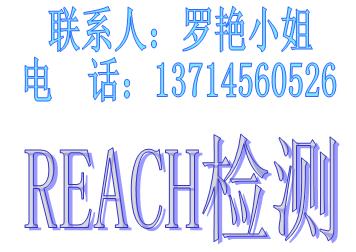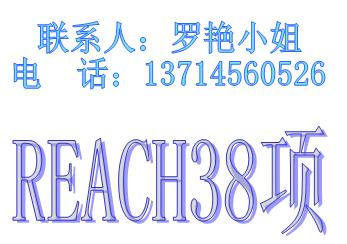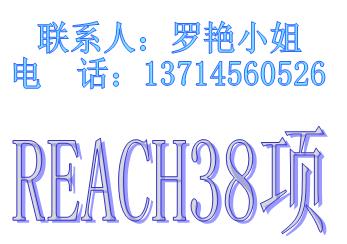2009年12月7日欧盟ECHA于发布公告,确定将15种新的SVHC增加到候选清单中,准备在2010年1月正式列入候选清单。
企业应对:
新的15种SVHC在2010年1月列入候选清单后,与***批15种SVHC一同构成30种SVHC,当30种SVHC中的任何一种:
1、作为物质提供给下游客户时,必须说明该物质;
2、在混合物(配制品)中浓度≥0.1%时,必须向客户提供SDS说明该物质;
3、在物品中含有率>0.1%时,必须向客户或消费者说明该物质(至少说明物质名称)。
英文15种新的SVHC增加到候选清单:
|
|
SUBSTANCE NAME |
EC |
CAS |
REASON FOR |
POTENTIAL USES |
|
1 |
Anthracene oil |
292-602-7 |
90640-80-5 |
Persistent, bioaccumulative and toxic; Very persistent and very bioaccumulative; Carcinogen, category 21) |
The substances are mainly used in the manufacture of other substances such as anthracene and carbon black. They may also be used as reducing agents in blast furnances, as components in bunker fuel, for impregnating, sealing and corrosion protection. |
|
2 |
Anthracene oil, anthracene paste,distn. lights |
295-278-5 |
91995-17-4 |
Persistent, bioaccumulative and toxic;Very persistent and very bioaccumulative; |
|
|
3 |
Anthracene oil, anthracene paste,anthracene fraction |
295-275-9 |
91995-15-2 |
Persistent, |
|
|
4 |
Anthracene oil, anthracene-low |
292-604-8 |
90640-82-7 |
Persistent, bioaccumulative and toxic; Very persistent and very bioaccumulative; Carcinogen, category 22) Mutagen, category 23) |
|
|
5 |
Anthracene oil, anthracene paste |
292-603-2 |
90640-81-6 |
Persistent, bioaccumulative and toxic; Very persistent and very bioaccumulative; Carcinogen., category 22); Mutagen, category 23) |
|
|
6 |
Pitch, coal tar, high temp. |
266-028-2 |
65996-93-2 |
Persistent, bioaccumulative and toxic; Very persistent and very bioaccumulative; Carcinogen, category 2 |
Pitch, coal tar, high temp. is mainly used in the production of electrodes for industrial applicati***. ***aller volumes are dedicated to specific uses such as he***y duty corrosion protection, special purpose p***ing, manufacture of other substances and the production of clay targets. |
|
7 |
Acrylamide |
201-173-7 |
79-06-1 |
Carcinogen, category 2; Mutagen, category 2 |
Acrylamide is almost exclusively used for the synthesis of polyacrylamides, which are used in various applicati***, in particular in waste water treatment and paper processing. Minor uses of acrylamide comprise the preparation of polyacrylamide gels for research purposes and as grouting agents in civil engineering. |
|
8 |
Aluminosilicate Refractory Ceramic Fibres Aluminosilicate Refractory Ceramic Fibres are fibres covered by index number 650-017-00-8 in Annex VI, part 3, table 3.2 of Regulation (EC) No 1272/2008, and fulfil the two following conditi***: |
- |
- |
Carcinogen, category 2 |
Refractory ceramic fibres are used for high-temperature insulation, almost exclusively in industrial applicati*** (insulation of industrial furnaces and equipment, equipment for the automotive and aircraft/aerospace industry) and in fire protection (buildings and industrial process equipment). |
|
9 |
Zirconia Aluminosilicate, Refractory Ceramic Fibres |
- |
- |
Carcinogen, category 2 |
Refractory ceramic fibres are used for high-temperature insulation, almost exclusively in industrial applicati*** (insulation of industrial furnaces and equipment, equipment for the automotive and aircraft/aerospace industry) and in fire protection (buildings and industrial process equipment). |
|
10 |
2,4-Dinitrotoluene |
204-450-0 |
121-14-2 |
Carcinogen, category 2 |
2,4-dinitrotoluene is used in the production of toluene diisocyanate, which is used for the manufacture of flexible polyurethane foams. The substance is also used as gelatinizing-plasticizing agent for the manufacture of explosive mixtures (e.g. for airbags in cars). |
|
11 |
Diisobutyl phthalate |
201-553-2 |
84-69-5 |
Toxic for reproduction, category 2 |
Diisobutyl phthalate is used as plasticiser for nitrocellulose, cellulose ether, polyacrylate and polyacetate dispersi***, and as a gelling aid in combination with other plasticisers, which are widely used for plastics, lacquers, adhesives, explosive material and nail polish. |
|
12 |
Lead chromate |
231-846-0 |
7758-97-6 |
Carcinogen, category 2; Toxic for reproduction, category 1 |
Lead chromate is used for manufacturing pigments and dyes, as a pigment or coating agent in industrial and maritime paint products or for embalming/restoring of art products. Further potential uses include as detergents and bleaches, photosensitive materials and for the manufacture of pyrotechnic powder. |
|
13 |
Lead chromate molybdate sulphate red (C.I. Pigment Red 104) |
235-759-9 |
12656-85-8 |
Carcinogen, category 2; Toxic for reproduction, category 1 |
Lead chromate molybdate sulphate red (C.I. Pigment Red 104) is used as a colouring, painting and coating agent in sectors such as the rubber, plastic and paints, coatings and varnishes industries. Applicati*** comprise the production of agricultural equipment, vehicles and aircraft as well as road and airstrip painting. |
|
14 |
Lead sulfochromate yellow (C.I.Pigment Yellow 34) |
215-693-7 |
1344-37-2 |
Carcinogen, category 2; Toxic for reproduction, category 1 |
Lead sulfochromate yellow (C.I. Pigment Yellow 34) is used as a colouring, painting and coating agent in sectors such as the rubber, plastic and paints, coatings and varnishes industries. Applicati*** comprise the production of agricultural equipment, vehicles and aircraft as well as road and airstrip painting. The substance is further used for camouflage or ammunition marking in the defence area. |
|
15 |
tris(2-chloroethyl)phosphate |
204-118-5 |
115-96-8 |
Toxic for reproduction, category 2 |
tris(2-chloroethyl)phosphate is mainly used as an additive plasticiser and viscosity regulator with flame-retarding properties for acrylic resins, polyurethane, polyvinyl chloride and other polymers. Other fields of application are adhesives, coatings, flame resistant paints and varnishes. The main industrial branches to use TCEP are the furniture, the textile and the building industry. |







